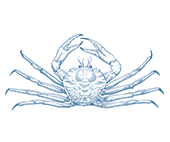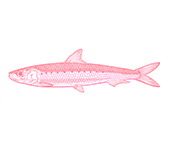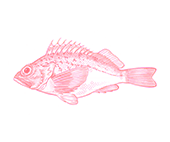




- Say No
Wild Caught
Region:
QLD
- Stout whiting are caught using otter trawls and Danish seine nets in QLD and NSW,
- Stout whiting populations are healthy.
- Stout whiting are caught using otter trawls and Danish seine nets that mainly operate over sandy habitats. Sand habitats are naturally resilient to fishing activity and it is unlikely any sensitive marine habitats are negatively impacted.
- The accidental catch of threatened and endangered species like endemic sharks and rays is a major issue in Australian trawl fisheries. The Queensland government abandoned an independent observer program in 2012 so bycatch reporting is not reliable and science-based management is hampered as a result. It is welcome that this program has recently recommenced and may support improving the GoodFish ranking of the QLD stout whiting fishery in future, but it was not possible to determine its efficacy at time of assessment.
- Commercial Trawl Fin Fish Fishery (1,790t in 2019)
Stout whiting are found in coastal waters from southern Queensland to northern New South Wales, from coastal sandflats to depths of >100m, where it is found over sandy seafloor habitats.
Fisheries managers assess the stock status of stout whiting using information from fishery catch records to assess if there are any significant changes in the age and size of fish caught. The stock status of stout whiting is considered healthy.
Stout Whiting is caught using otter trawls and Danish seine nets. Trawled areas are mainly comprised of sandy sea floor, which are relatively resilient to fishing disturbance. Although the area fished is not extensively mapped, the likelihood of sensitive marine habitats being affected is low in this fishery.
While it is possible that the QLD and NSW stout whiting fisheries are having an acceptably low impact on TEP and discard species, the relatively high-impact nature of the fishing methods, spatial overlap of the fishery area with multiple TEP species, and failure of management and industry to provide independently verified data to manage any impacts are a serious concern and are responsible for the ‘say no’ GoodFish ranking of the fishery here.
It is welcome that a program of independent scrutiny has been applied to the QLD stout whiting fishery, though it is not yet possible to consider any information from the program on the fishery’s contemporary impact on vulnerable bycatch species. If this program results in outcomes which provide confidence that any impacts are sustainable, there is strong potential to improve the GoodFish ranking of this seafood option if implemented quickly and effectively.


